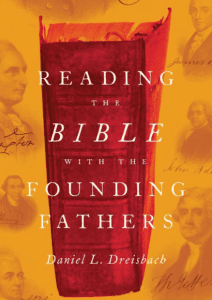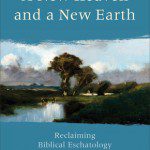
Over the last year or so I have been listening to scripture straight through in large chunks during my commute (20-25 minutes each way depending on traffic). The Bible Gateway App for my phone has a great feature that permits listening to an audio reading or dramatization of several different translations. Plug the phone into the power outlet (evolved from a cigarette lighter with vestigial features of such, a cultural idea my children need to have explained to them) for power, into the sound system on the dash for volume, and off we go.
The idea of reading/listening straight through wasn’t my idea to begin with. I got it from one of the many wise commenters on this blog. It has been a fascinating experience, and one I have commented on in earlier posts. While I had read the Bible since childhood – the bits and pieces scattered here and there, primarily aimed at salvation (Romans Road and heaven) or at moral lessons for twentieth or now twenty-first century life provided little real grounding in the story of scripture.
This latest time through the text I started with the prophets, then continued to the NT. Over the last couple of weeks I have been listening to the early part of the OT once again. Genesis, Exodus (all that exciting tabernacle stuff), Leviticus (all those purity laws – not to mention the laws concerning defiling skin diseases), Numbers (the name of this book conveys the excitement) and on. Every time through I get a better perspective on the whole.
Lately I have been listening with two thoughts in mind: “What does this mean through the spectacles of the Jesus Creed?” and “What does it mean if we look back from the perspective of Revelation?” If we are being drawn towards God’s future – what was the point of Joseph, Moses, Leviticus, Joshua?
But … the Jesus Creed … God’s Future … that is all well and good. But what does it have to do with much, perhaps most, of the text we have? What is the point of all this detail about defiling skin diseases, defiling molds, and placing the blood on the lobe of the right ear, on the thumb of the right hand and on the big toe of the right foot? To pick just a few examples.
Ancient Ways of Thinking. Pete Enns has found that the killing of the Canaanites, the herem warefare of Joshua and elsewhere in the OT, is among the most contentious topics he can raise. See his recent post On Creation and Killing Canaanites and posts linked within this one. Pete concluded the post with an important observation:
So, the question, “Why would God command the Israelites to exterminate the Canaanites?” cannot be addressed in an intramural theological back-and-forth. It must also include this little bit of historical information: Yahweh’s actions are not unique but seem part of an ancient way of thinking.
Maybe that’s the best way to sum up what I’m saying here: theological discussions about biblical interpretation must be in conversation with ancient ways of thinking.

This may not be a profound point, but it is a very important one. Theological discussions about biblical interpretation must be in conversation with ancient ways of thinking. It isn’t just the “troubling” passages where we have a moral dilemma that must be in conversation with ancient ways of thinking, but the whole text. Defiling skin diseases, defiling molds, and the sprinkling of blood must all be understood in conversation with ancient ways of thinking. The story of Joseph and of the Exodus must be understood in conversation with ancient ways of thinking.
John Walton is general editor for the Old Testament volumes the Zondervan Illustrated Bible Background Commentaries. In Methodology: An Introductory Essay he introduces the purpose of the series to provide information on the context behind the OT books. After a brief discussion of creation narratives, makes the point:
The biblical text, in other words, formulated its discussion in relation to the thinking found in the ancient literature. It should be no surprise, then, if the areas of similarity are found. This is far different from the contention that Israelite literature is simply derivative mythology. There is a great distance between borrowing from a particular piece of literature (as has been claimed in critical circles) and resonating with the larger culture that has itself been influenced by its literatures. (ix)
Walton points out that this extends not only to the content of the ancient literature, but to the genre of the literature. Ancient genres do not match 21st century ideas and sensibilities. What was the expected form and content of a history in the ancient world? What purpose did genealogies and dates and numbers serve?
The importance of ancient context extends as well to Leviticus. Roy E. Gane in his background commentary on Leviticus begins:
Leviticus, the central book of the Torah …, has to do with the areas of ritual worship and religious, criminal, and civil law, which were central to the cultural life and governance of all ancient Near Eastern societies and generated a vast quantity of preserved texts and objects. So the scope for relationship between this biblical book and parallel materials is practically limitless.
More breathtaking than the sheer volume of parallels is the fact that so many of them are so close. … It is abundantly clear that Leviticus was meant to communicate with and address the needs of real people in the context of their ancient Near Eastern culture, which contained a number of positive elements worthy to be affirmed and continued. (p. 285-286)
The title of this post comes out the the rhythmic repetition “it is a defiling skin disease” that stuck with me as I listend to Leviticus 13 last week. The concept of a defiling skin disease is not unique to the Israelite people. Gane points out that white discoloration (eg. Lev. 13: 3,10, 20,25) is also a worrisome omen in some Mesopotamian sources, the idea that skin disease could be divine punishment is found Mesopotamian curses, and these also speak of ostracizing persons who have such a skin disease. A fungus in a house could also be ominous in Mesopotamian culture.
By contrast, while fungus in an Israelite house could generate the need to ritually purify it – or (in a worst case scenario) could lead to its condemnation and demolition – the problem was limited to the house and did not indicate other kinds of dangers (caused by demons, etc.) for future inhabitants. So there was inconvenience, but once again, the religion of Israel’s God eliminates superstition and the fear that results from it. (p. 303)
And after further discussion of a purification ritual with similarities and differences he points out:
Such similarities reinforce the concept that the Israelite ritual system and the worldview associated with it shared much with common ancient Near Eastern heritage, but important differences made Israelite religion unique in crucial ways. (p. 303)
He points out that the fact that Leviticus marries religion to social ethics and to attitudes of the heart like “love” for one another is a fundamental distinction between the biblical text and the other ancient Near Eastern law collections.
God’s Mission. I’d like to add to Pete’s point (with a point I probably got from him in the first place). Theological discussions about biblical interpretation must be in conversation with the whole sweep of scripture. The passages in Genesis, Leviticus, and Joshua must be read in the context of the prophets and the exile. There are allusions and references that pop up in the Pentateuch that echo Kings, Chronicles, and the prophets. Sacrificing children to Molek as an example.
The Lord said to Moses, “Say to the Israelites: ‘Any Israelite or any foreigner residing in Israel who sacrifices any of his children to Molek is to be put to death. The members of the community are to stone him. I myself will set my face against him and will cut him off from his people; for by sacrificing his children to Molek, he has defiled my sanctuary and profaned my holy name. (Lev. 20:1-3)
This is a theme that reappears in 1,2 Kings, Isaiah, and Jeremiah. Asherah poles, intermarriage, and the corruption by the idols brought into the house by a wife pop up repeatedly. When we read the scripture as a whole, in large chunks, from beginning to end, the echoes of connection are inescapable. Other themes – love your neighbor as yourself, care for the widows, the orphans, the poor among you, fair treatment for the foreigner living among you also run through the whole. Again the connections are inescapable.
And it isn’t just the Old Testament. The New Testament writers link the story of Jesus to the books of the Old Testament. The allusions in Matthew, Luke, Mark and John, Acts and the Epistles are innumerable. And the book of Revelation links the story of Jesus, thus the entire story of scripture, to “The Story of God’s Future” – the new heavens and the new earth.
The uniting theme, it seems to me, is God is pulling his people, which ultimately includes people of all nations and cultures, into his future. The ethical message that underlies it is the command to love God and love others.
The oft heard criticism that science and faith are at loggerheads, irreconcilable enemies; that the bible is merely a collection of disjointed stories and moral legends; that modern knowledge and understanding has relegated Christian faith to the dust bin of time to stand alongside other myths and stories, Ra, Zeus, and Thor; that gods are hypothesized only to explain the otherwise inexplicable aspects of nature; God is no longer a necessary hypothesis; are eviscerated by the vision of the work of God in his creation.
That ancient texts reflect ancient culture is incidental to the truth and only to be expected. This is true of cosmology, ritual behavior, and more. We understand the message of God far better when we understand the ancient culture and context and when we are immersed in the entire sweep of scripture.
What role does the OT play in our understanding of the mission of God?
Does it make sense to view the whole from the perspective of God’s future?
Do passages like those on the Exodus and defiling skin diseases play an important role?
If you wish you may contact me directly at rjs4mail[at]att.net
If interested you can subscribe to a full text feed of my posts at Musings on Science and Theology.











